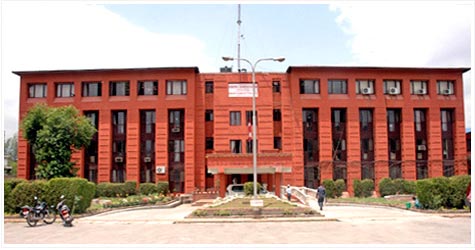Lack of kits at Nepal’s only testing centre hampering COVID-19 fight
Kathmandu, March 18
The World Health Organisation has a simple message for countries trying to contain spread of coronavirus disease: Test, test, test.
“Test every suspected case. If they test positive, isolate them and find out who they have been in close contact with up to two days before they developed symptoms, and test those people too,” WHO Director-General Tedros Adhanom Ghebreyesus said on Monday.
But Nepal is doing just the opposite. It is turning away even those with symptoms of COVID-19, such as dry cough and fever.
Yesterday, Dr Sundar Mani Dixit, a senior medical doctor, told a public event that he had referred three of his patients with COVID-19 symptoms to Sukraraj Tropical and Infectious Disease Hospital at Teku.
“But the hospital turned away those patients, who had returned from abroad, stating they had already crossed the 14-day limit (when the illness worsens). They were told test cannot be conducted (as their medical condition had not deteriorated),” Dr Dixit said.
Nepal so far is safe from coronavirus threat as there is no active case. But many are concerned about the prospect of a sudden jump in cases as in Iran, Italy and South Korea. What is also adding to nervousness is decision taken by the Indian state of Bihar, which shares border with Nepal. Bihar today declared COVID-19 an epidemic. Bihar so far has no coronavirus positive cases, but chances of exponential rise in cases in Nepal in the event of an outbreak in the Indian state cannot be ruled out.
“The most effective way to prevent infections and save lives is breaking the chains of transmission. And to do that, you must test and isolate,” said WHO head Ghebreyesus.
The only lab in Nepal that performs coronavirus tests is National Public Health Laboratory. But it only has reagents to test 1,500 samples. This has prompted the lab to confine its tests to those who have fever and at least one more symptom, especially of respiratory disease, such as cough or shortness of breath; those who have travelled to or are residents of a country or territory that has reported local transmission of COVID-19 during the 14-day period prior to
onset of the symptoms; or those who have been in close contact with probable or confirmed case of COVID-19. What’s more, people can perform coronavirus test only upon a doctor’s recommendation.
These testing criteria were developed on the basis of WHO’s surveillance case definition, according to NPHL.
As a result of these rigid testing criteria, NPHL has only conducted 512 coronavirus tests since the last week of January, at the rate of two to a maximum of seven tests per day.
“The number of tests should be increased as many people coming to Nepal from abroad have shown suspected symptoms. Rapid expansion in testing will help us diagnose the disease and prevent spread of the infection,” said Dr Anup Bastola, consultant tropical medicine and spokesperson for Sukraraj Tropical and Infectious Disease Hospital.
Coronavirus tests should also be escalated as people who have tested positive for common flu are not being asked to perform COVID-19 test, according to NPHL Virologist Dr Shravan Kumar Mishra. Lately, many are suffering from common flu due to change in weather.
“These people should also undergo COVID-19 test because a person who has tested positive for common flu may also test positive for coronavirus,” said Dr Mishra.
The Ministry of Health and Population has said it is working on expanding coronavirus tests. “We have sought 5,000 reagents. The process of procuring them is under way,” said MoHP Spokesperson Dr Bikash Devkota.






